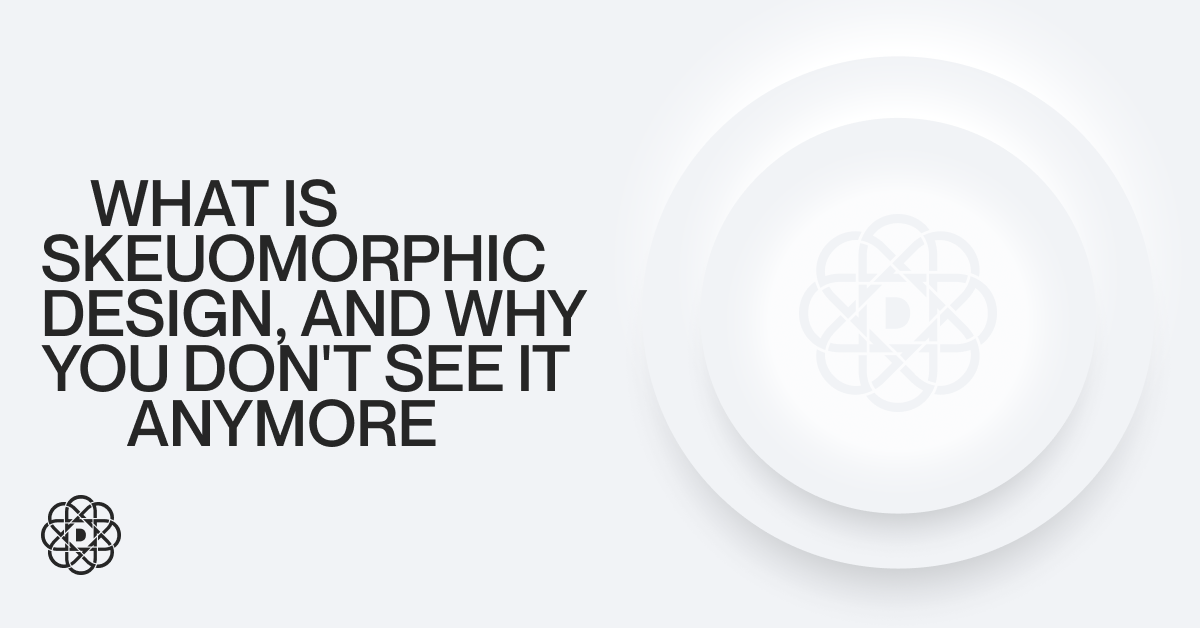Skeuomorphic Design – What Is It? A Complete Guide

What is skeuomorphic design? This is a method of graphic UI design that attempts to mimic real-life objects. The perfect example is the recycle bin icon found in Windows systems, resembling a real bin. The aim of skeuomorphism is to create intuitive interfaces by using elements that the user is familiar with.
Why is a skeuomorphic design rarely used nowadays? An overabundance of real-life elements can be distracting, hence failing to fulfill the function of the whole product. So, while it should be intuitive, it was superseded by more user-friendly methods. Do you want to learn more? Then read on!
What Is Skeuomorphic Design?
Skeuomorphic design, or simply skeuomorphism, is both a UI and UX design method that involves recreating and mimicking real-life objects to achieve an intuitive user interface. It was especially useful when the level of technology literacy was low since it helped people navigate through computer systems using icons and buttons resembling objects that they were familiar with.
You can see skeuomorphic design at almost every step of using digital technology. Take, for instance, the calendar in your computer or mobile phone – the icon is designed so that it would resemble a paper calendar used in real life. However, we need to underline that skeuomorphism doesn’t apply only to the graphics.
Let’s look at one of the most popular apps on your smartphone – the calculator. Is its graphical layer adjusted to resemble a calculator? Not exactly. However, it’s layout is, so it still embraces skeuomorphism.
Why Do You Rarely See Skeuomorphism Nowadays?
Although popular in the past, skeuomorphic design is no longer the go-to option, and you’ll rarely see it in practice. Let’s return to the calculator example – surely, the layout is skeuomorphic, but the graphic design of both the app and its icon isn’t, right? So, why is it so?
The main issue with skeuomorphic design is that it is no longer in line with the most important UX design principles. While mimicking real objects was a useful technique at the beginning of digital design, nowadays, it often creates an overabundance of elements that are both distracting and unintuitive.
Moreover, this design method often affects the information architecture of a digital product. Hence, even reproducing just the layout of realistic objects might often not be the most effective option for the user and designers.
When Is Skeuomorphic Design Good?
The fact that you see skeuomorphic design less often does not mean that it isn’t used at all. There are instances where it still proves to be the best strategy, though its goals often change in the process. Let’s take a look at a few examples.
Systems for Technologically Illiterate
While digital technologies are widespread, there are still areas in the world and communities that aren’t comfortable or used to using the internet. Take, for instance, the elderly in semi-developed countries – they might struggle with simple internet tasks, like sending emails, not to mention more complex ones.
In such cases, adopting the skeuomorphic design might indeed create a more intuitive solution. Hence, it is still applied if an app or website is targeted at those who struggle with digital technologies.
Immersion
As we mentioned before, the goals of skeuomorphic design are often different nowadays than they were when this method was coined. Thus, you’ll frequently see skeuomorphism used for the sake of better immersion.
What are examples of this in practice? Video games. If the game is focused on the story and diving into the colorful (or gloomy) world, adopting this method in UI design can help build up the atmosphere. Take, for instance, the bestseller: Red Dead Redemption 2 – the map in the game is stylized to resemble realistic, rugged Wild West ones.
New and Specialized Tech
You’ll also see the skeuomorphic design in newer technologies. The users are simply…less skilled in using them, so skeuomorphism is often smuggled to such tech. However, it’s not as ornamental and detailed as in other cases.
You’ll also see it in highly specialized tech, especially in those apps that resemble physical devices. An ideal example of this is music software, where the layout and graphics often resemble real mixing consoles. Here, it is still intuitive despite the invention of flatter design methods, like Material Design, since a typical user will likely use both the physical console and the software, so this familiarity is still helpful.
The Takeaway
Knowing what skeuomorphic design is, you can clearly see why, although it isn’t dead, that’s no longer the go-to approach to digital product development. Nevertheless, it’s what paved the way for newer strategies and helped society learn to use digital devices. Plus, there are still circumstances in which opting for a skeuomorphic design might be a good choice, so it’s good to know its principles.
Do you need support with your digital product design? Then check out our website development services and see how we can help you!



